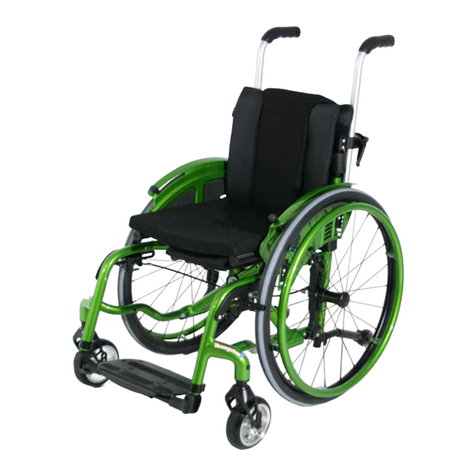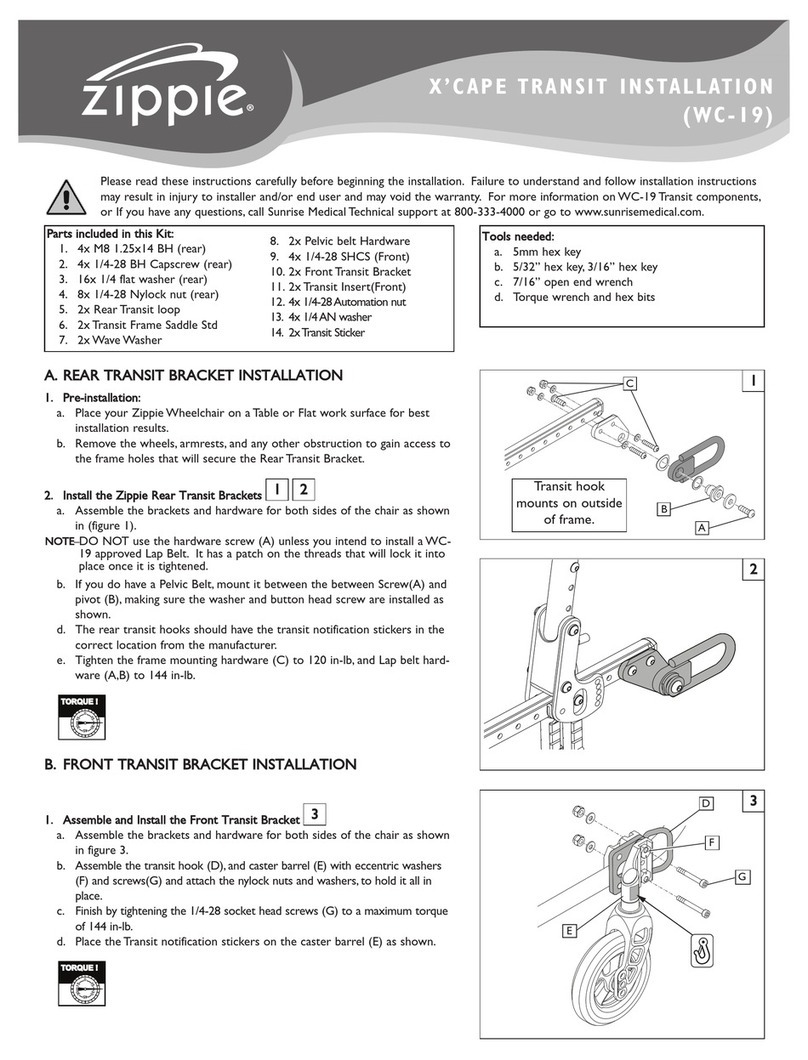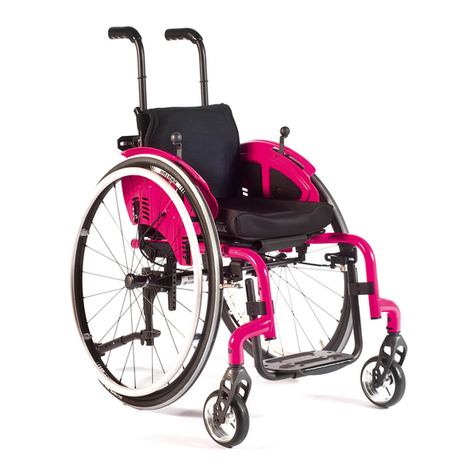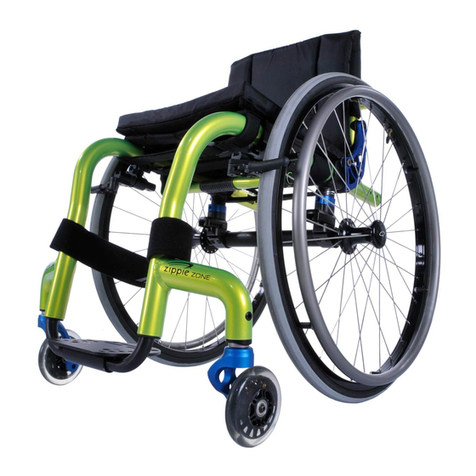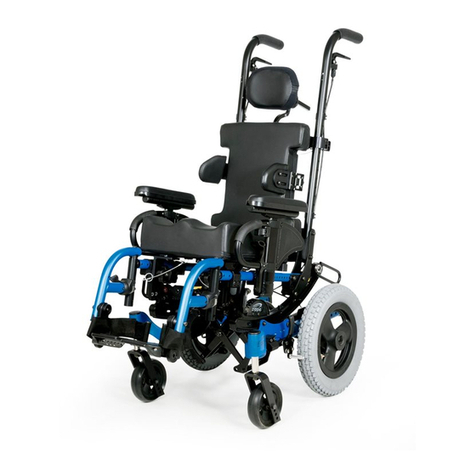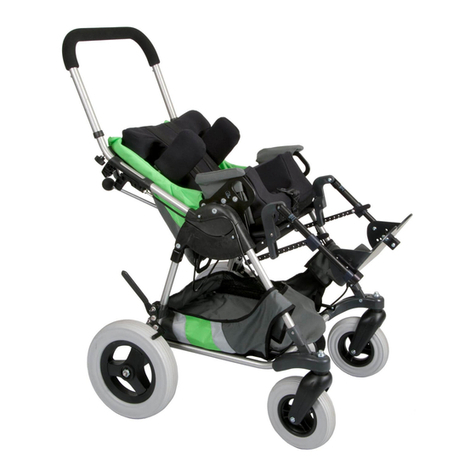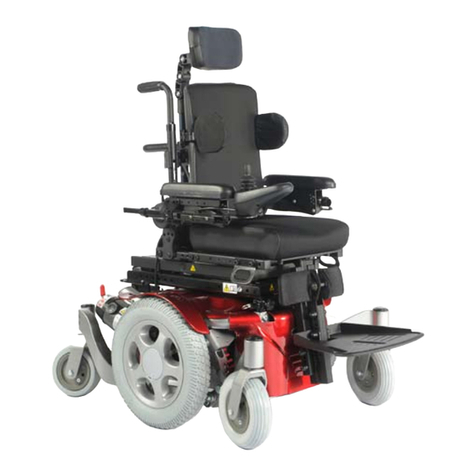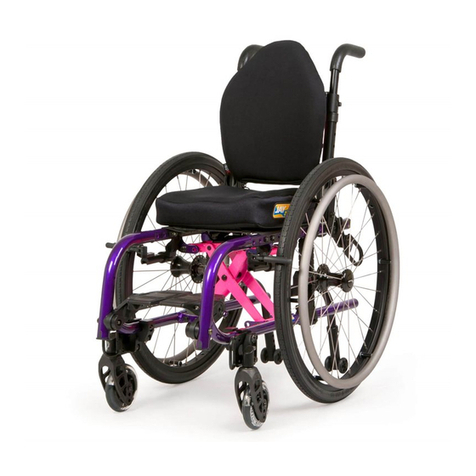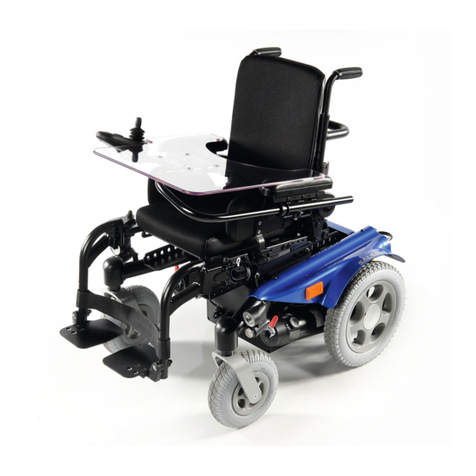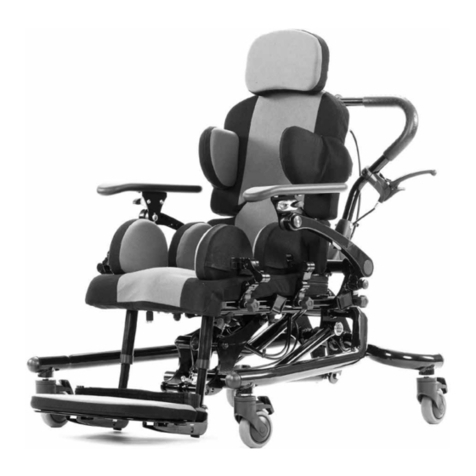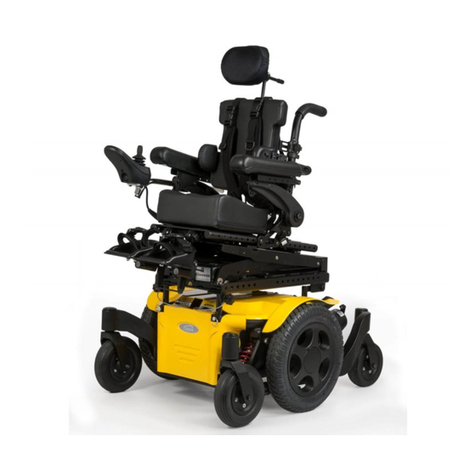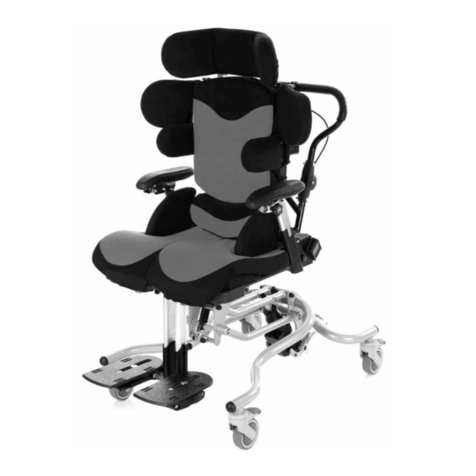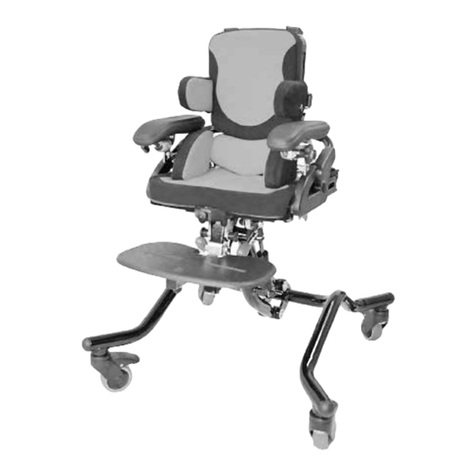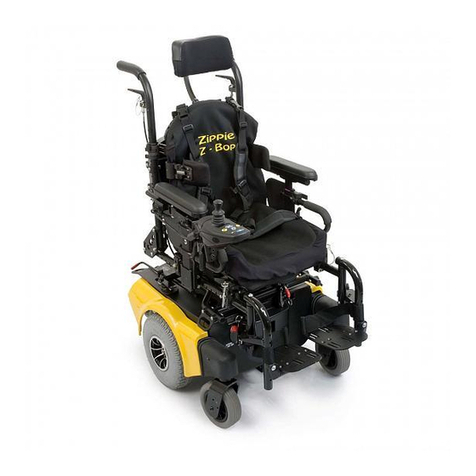1.0 General safety notes and driving limits
The engineering and construction of this wheelchair has been
designed to provide maximum safety. International safety
standards currently in force have either been fulfilled or
exceeded in parts. Nevertheless, users may put themselves at
risk by improperly using their wheelchairs. For your own safety,
the following rules must be strictly observed.
Unprofessional or erroneous changes or adjustments increase
the risk of accident. As a wheelchair user, you are also part of
the daily traffic on streets and pavements, just like anyone else.
We would like to remind you that you are therefore also subject
to any and all traffic laws.
Be careful during your first ride in this wheelchair. Get to know
your wheelchair.
Before each use, the following should be checked:
• Quick-release axles on the rear wheels
• Tyres, tyre pressure and wheel locks.
Before changing any of the adjustments of this wheelchair, it is
important to read the corresponding section of the user’s
manual.
It is possible that potholes or uneven ground could cause this
wheelchair to tip over, especially when riding uphill or downhill.
When riding over a step or up an incline frontally, the body
should be leaning forward.
DANGER!
• NEVER exceed the maximum load of 125 kg, for driver plus
any items carried on the wheelchair. If you exceed the
maximum load, this can lead to damage to the chair, or you
may fall or tip over, lose control and may lead to serious injury
of the user and other people.
• To avoid falls and dangerous situations, you should first
practice using your new wheelchair on level ground with good
visibility.
• This wheelchair should be used exclusively to convey one
person at a time. Any other use does not comply with the
intended purpose.
• When getting on or off the wheelchair, do not use the foot-
boards. These should be flipped up beforehand and swung to
the outside as far as possible.
• Depending on the diameter and setting of the castors, as well
as the centre of gravity setting of the wheelchair, the castor’s
may begin to wobble at high speeds. This can lead to the
castor’s being blocked and the wheelchair may tip over.
Therefore, please make sure that the castor’s are adjusted
correctly (see the Chapter “Castor’s”).
• In particular, do not travel on an incline without brakes, travel
at a reduced speed. At higher speeds, depending on the
configuration and/or physique/physical capabilities of the user,
there may be unexpected castor wobble. This can lead to
injury of the user.
• Explore the effects of changing the centre of gravity on the
behaviour of the wheelchair, for example on inclines, slopes,
all gradients or when overcoming obstacles. Do this with the
secure aid of a helper. We recommend that novice users use
anti-tip tubes.
• Anti-tip tubes should prevent the chair tipping over backwards
unintentionally. Under no circumstances should they take the
place of transit wheels, and be used to transport a person in a
wheelchair with the rear wheels removed.
• With extreme settings (e.g. rear wheels in the most forward
position) and less than perfect posture, the wheelchair may tip
over even on a level surface.
• Do not hang heavy items such as shopping bags or
backpacks, on the push handles, head rest or backrest of the
wheelchair.
• These can change the tipping point and there is a risk of
tipping backwards.
• When reaching for objects (which are in front of, to the side or
behind the wheelchair) make sure that you do not lean too far
out of the wheelchair, as if you change the centre of gravity
there is a risk of tipping or rolling over.
• Only use your wheelchair properly. For example, avoid
travelling against an obstacle without braking (step, kerb edge)
or dropping down gaps.
• Only attempt stairs with the help of an attendant. There is
equipment available to help you, e.g. climbing ramps or lifts,
please use them. If there is no such equipment available, then
the wheelchair must be tipped and pushed over the steps (2
helpers).
• In general, any anti-tip tubes fitted must be set beforehand, so
that they cannot touch the steps, as otherwise this could lead
to a serious tumble. Afterwards the anti-tip tubes must be set
back to their correct position.
• When using the lifting ramp make sure that the anti-tip tubes
fitted are positioned outside the danger area.
• Secure your wheelchair on uneven ground or when
transferring (e.g. into a car) by using the wheel locks.
